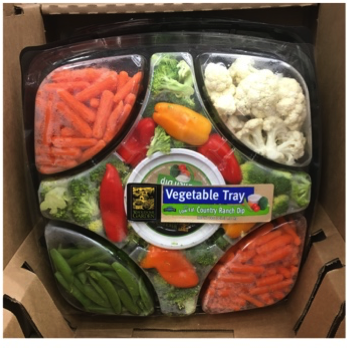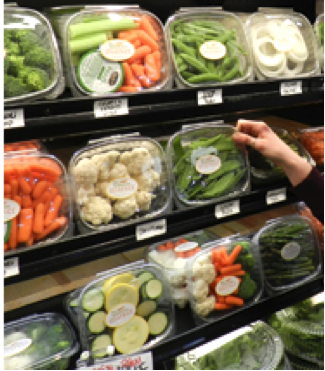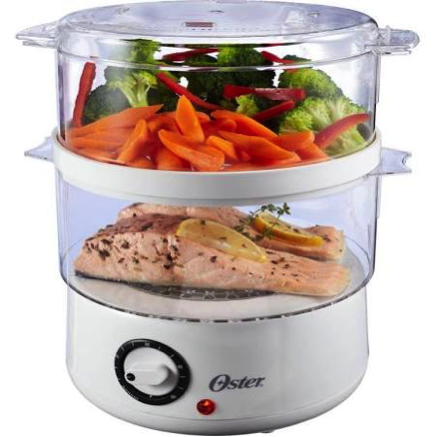Vegetables: The Best Weight Loss Tool You May Have Never Considered
- Amy Smith MS, RD, LD, CDE
- Nov 29, 2016
- 5 min read
In my experience as a nutrition educator I have learned that most people desire simple plans when trying to achieve their weight loss goals, but sometimes struggle with the idea that something so simple could actually be effective. Give me a chance to sell you on why vegetables are my FAVORITE (yes it's true), favorite food, and how they can help promote weight loss more than any of the fancy books, apps, or fad diets ever could.
First let’s address one of the main concerns most people have after deciding to get healthy: a salad will never taste like a cheeseburger (very sorry about that). Interestingly humans physiologically should primarily consume plants. Unfortunately, many modern day humans have retrained their body to crave certain foods which some describe as "hyper-palatable" foods. These are calorie dense foods that are high in fat, salt, and sugar and are nutrient poor. Fortunately, you can retrain your taste buds, it just takes time. Vegetables should be the most important component of our diet, but have fallen by the wayside for most Americans. Start to make them the majority of your diet and you will see why I promote them as an amazing weight loss tool.
Why vegetables? The vitamins and minerals in vegetables are micronutrients that help many of the metabolic processes in the body work better. They make your cells happy, the digestive track move effectively, decrease your risk of all cancers as much as 50%, and help you lose weight!
How do they help you lose weight? Your stomach actually recognizes volume over calories. The volume in foods is what makes you feel "full".

While eating your stomach stretches, and the "full" feeling you get comes from a signal that is sent to your brain telling you to STOP EATING! Notice for the same amount of calories, you are literally more full than you would be for significantly less volume (image above). Why is this important?
Many people incorrectly assume that if they add or subtract individual foods in their diet, they have made enough changes to promote weight loss. However the true problem is that most people who make these minor changes, even if they are healthy changes, can still feel hungry if they are not using high volume low calorie foods. So how to do we fill up while cutting back on the less desirable foods and avoid hunger?
The answer is NON-STARCHY VEGETABLES! They only have 25 calories per ½ cup cooked, or 1 cup raw, and are loaded with vitamins, minerals, and fiber! They also have 0g of fat, and a minimal 5 grams of carbohydrates per serving. Non-starchy vegetables are most vegetables that do not include beans, potatoes, corn, or peas. See below for a few of the most common non-starchy vegetables.

On to implementation in your daily diet. Remember to keep the first changes simple, and they will be easier to maintain. The first tip I would encourage you to try is start with the plate method. This is where you aim to have at least 50% of your plate be non-starchy vegetables. The other side of the plate is split up with 25% protein, and 25% carbohydrate. Take a moment and think about what your plate typically looks like. Most of my patients had plates that resembled the ones below.
Where are the vegetables? The plate method is a tool that can help you cut down significantly on calories, and correct the proportions of foods on your plate. See below for a couple of easy ways to implement the plate method with various foods.
As you can clearly observe, when the majority of your plate is non-starchy vegetables, there is less room for the calorie rich foods. By making this very easy adjustment daily at lunch and dinner, you will cut down on calories, and increase nutrient dense foods that will make you look and feel amazing. Don’t forget how EASY this is! If at first you do nothing else but decrease the less desirable foods, and increase the non-starchy vegetables on your plate, you are definitely heading in the right direction.
Next we will discuss additional ways I have found to quickly and easily add vegetables into your diet on a daily basis.
1. Buy pre-cut vegetables, and put them on the top shelf of your fridge. If you see them and they are already prepared you are more likely to eat them than let them rot in your bottom drawer. This saves money because you are not throwing forgotten vegetables away every time you come home from the grocery store.
2.) Purchase frozen vegetables in bulk. Frozen vegetables are vastly underrated. These gems are usually picked at their peek of ripeness, flash frozen, and do not have the time to degrade like fresh vegetables can. They are also extremely budget-friendly because you only use what you need (so no waste), and this large bag (below) is around $5.00 at Wal-mart. Don’t forget about awesome veggie steamers like the one pictured below. They are a quick and easy way to cook large quantities of vegetables, and it is by far the most used kitchen appliance in my home. The steamer is budget-friendly as well, costing between $20-$30.00 at most stores. Don’t forget to utilize spices to vary flavors.
3.) Steam fresh frozen vegetables. They are absolutely the quickest and easiest way to add vegetables to your diet daily. You will never find an excuse to not eat your vegetables when you purchase these. There is very little food waste because they are pre-portioned, and even have options that are pre-seasoned. They usually only take 5 minutes to prepare and are great for college students, singles, or for families that need a quick side of vegetables on a busy day.

4.) Purchase a tub of lettuce. A tub of organic mixed greens is typically around $5.00-$6.00 and can be a side for many meals throughout the week. Don’t forget you can vary the lettuces to offer additional health benefits, and mix up the dressings. Food for thought: with a tub of lettuce and pre-cut vegetables it can actually take LESS time to make a salad than a peanut butter and jelly sandwich. Having tub of lettuce on hand is by far one of the quickest and easiest ways to achieve the plate method as well.

Final thoughts: Living a healthy lifestyle can be difficult in a society where there are fast food restaurants and hyper-palatable foods bombarding us via all forms of media and marketing on a daily basis. You must never give up trying to attain health though, and I hope you will now consider vegetables as a valuable tool in your tool box to aide in weight loss and keep you healthy all the years of your life.

Amy Smith MS, RD, LD, CDE
Amy Smith is a Registered and Licensed Dietitian in addition to a Certified Diabetes Educator. She received her undergraduate degree from the University of Houston in Nutrition. She completed her Master’s degree in nutrition from Texas Woman’s University, and is a graduate of the Veterans Affairs dietetic internship program. She has worked primarily as an outpatient diabetes educator, as well as an inpatient clinical dietitian for a large hospital system.




































Comments